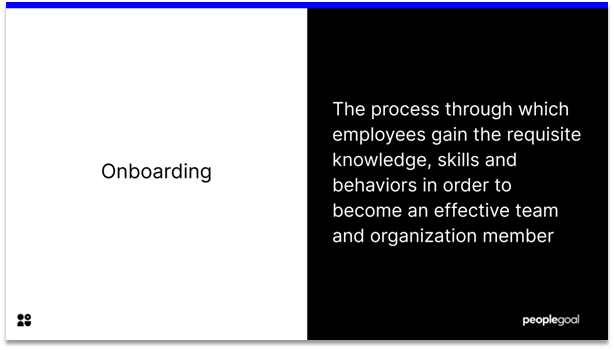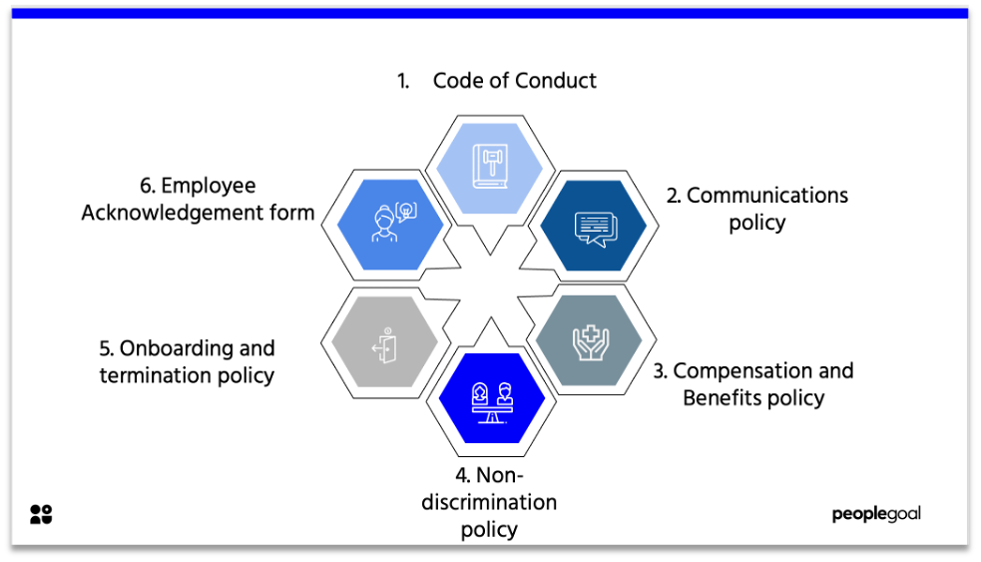Employee onboarding is the process of introducing a new employee to their job, the company, and the company’s culture. It’s important to make sure that new employees feel welcome, supported, and prepared for their role.
- Onboarding can involve a variety of activities, such as:
- Providing new hires with information about the company, its history, values, and goals
- Giving new employees an overview of their job duties and responsibilities
- Introducing new hires to their coworkers and other important people in the company
- Helping new employees understand company policies and procedures
- Providing new hires with training and resources to help them succeed in their role
- Onboarding typically begins before the new employee’s first day on the job and can continue for several weeks or even months. It’s important to make sure that new hires feel supported and have the tools and resources they need to succeed in their new role.
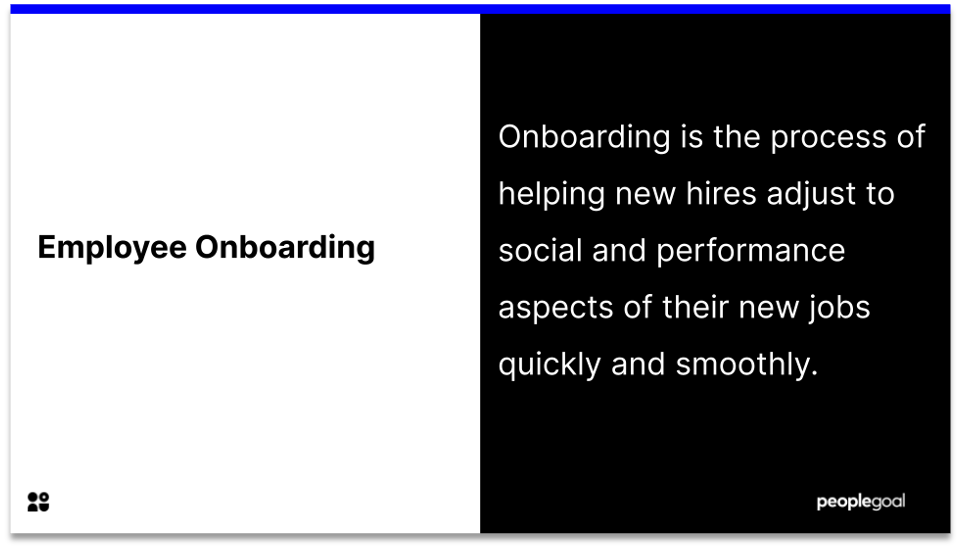
When the employee onboarding starts?
On the first day of employee onboarding, it’s important to make sure that new hires feel welcome and supported. Some activities that may be helpful to complete on the first day include:
- Providing a tour of the office or workspace
- Introducing the new employee to their coworkers and other important people in the company
- Reviewing the new hire’s job duties and responsibilities
- Providing any necessary training or resources
- Setting up the new hire’s workstation and providing them with any necessary equipment or materials
- Reviewing company policies and procedures
- Discussing the new hire’s goals and expectations for their role
- Answering any questions the new employee may have
How to set up an employee onboarding process?
- Pre-arrival: Before the new hire’s first day on the job, send them information about the company, their job duties and responsibilities, and any necessary paperwork or documents.
- First day: On the first day, provide the new hire with a tour of the office or workspace, introduce them to their coworkers and other important people in the company, and review their job duties and responsibilities.
- First week: During the first week, provide the new hire with any necessary training and resources, and help them understand company policies and procedures.
- First month: In the first month, continue to provide support and resources to the new hire as they become more familiar with their role and the company. This may include assigning them a mentor or assigning them a buddy to help them navigate their new job.
- Ongoing: After the first month, continue to provide support and resources to the new hire as needed. Regularly review their progress and make any necessary adjustments to ensure that they are meeting their goals and expectations.
Remember, every company is different and the specific activities included in the onboarding process may vary. It’s important to customize the onboarding process to meet the needs of your company and your new hires.
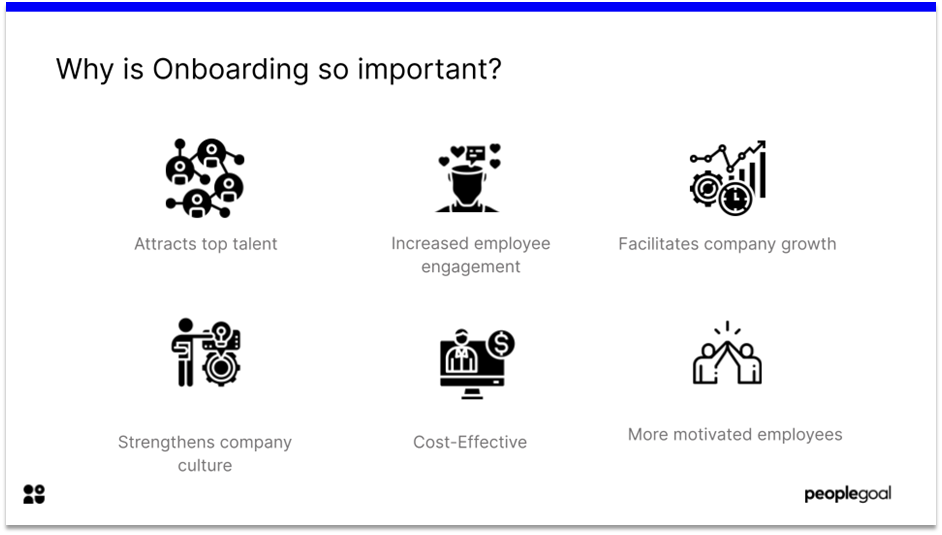
What resources a new hire should have access to?
It’s also important to make sure that the new hire has access to the resources and support they need to succeed in their role. This may include providing them with a mentor or assigning them a buddy to help them navigate their new job.
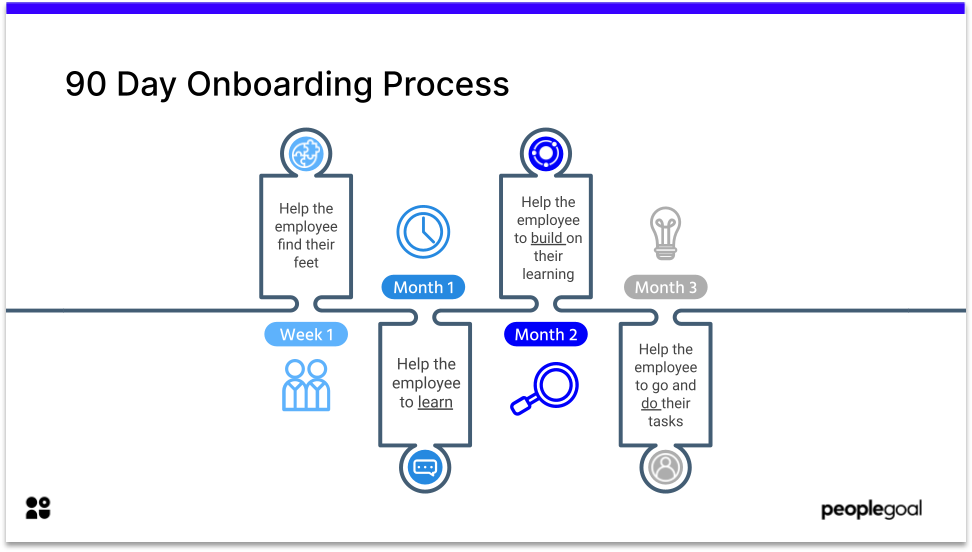
How to set up goals for new hires?
Setting up goals for new hires is an important part of the onboarding process as it helps new employees understand what is expected of them and what they need to focus on in their new role. Here are some steps you can take to set up goals for new hires:
- Review the job description and requirements: Make sure you have a clear understanding of the new hire’s role and what is expected of them.
- Identify the key areas of focus: Determine the most important areas that the new hire should focus on in their first few weeks or months on the job. These could be specific tasks or projects, or more general goals related to learning about the company and building relationships with coworkers.
- Set SMART goals: Use the SMART criteria (specific, measurable, achievable, relevant, and time-bound) to create specific and achievable goals for the new hire. For example, "Learn about the company’s products and services and be able to explain them to customers by the end of the first week" is a SMART goal.
- Discuss the goals with the new hire: Review the goals with the new hire to make sure they understand what is expected of them and to give them the opportunity to ask any questions.
- Provide support and resources: Make sure the new hire has the resources and support they need to achieve their goals, such as training, mentorship, or access to relevant materials.
- Regularly review and adjust the goals: As the new hire gets more familiar with their role, it may be necessary to adjust their goals. Regularly review their progress and make any necessary adjustments to ensure that they are on track to meet their goals.
How to set performance expectations with a new hire?
Assessing new hire performance is an important part of the onboarding process as it helps you understand how well the new hire is adapting to their role and whether they are meeting the expectations for their position. Here are some steps you can take to assess new hire performance:
- Set clear expectations: Make sure the new hire understands what is expected of them in their role by providing them with clear goals and objectives.
- Provide feedback: Give the new hire regular feedback on their performance, both positive and constructive. This can help them understand what they are doing well and what they need to work on.
- Observe the new hire’s work: Watch the new hire in action and take note of their strengths and areas for improvement.
- Ask for feedback from coworkers: Get input from the new hire’s coworkers about how well they are adapting to the team and their role.
- Review the new hire’s progress: Regularly review the new hire’s progress towards meeting their goals and objectives.
It’s generally a good idea to assess new hire performance on a regular basis, especially during the first few weeks or months on the job. This can help identify any areas where the new hire may need additional support or training.
How to use feedback to ensure new hires are fully onboarded?
Asking for feedback from new hires can help you understand their perspective and how they are adapting to their new role. Here are some example questions you could ask to gather feedback from new hires:
- What do you find most challenging about your new role?
- What do you find most enjoyable about your new role?
- How well do you feel you understand your job duties and responsibilities?
- Do you feel you have the support and resources you need to succeed in your role?
- Are there any areas where you feel you could use additional training or support?
- How do you feel you are fitting in with your team and the company culture?
- Is there anything you would like to change or improve about your onboarding experience?
It’s important to keep in mind that every new hire is different and may have unique feedback and concerns. Make sure to listen carefully to their responses and address any issues or concerns they raise.
Common problems with the onboarding process
There are a number of common problems that can arise during the employee onboarding process. Here are a few examples:
- Lack of structure: If the onboarding process is not well-organized, it can be confusing and overwhelming for new hires.
- Lack of support: If new hires do not feel supported by their managers or coworkers, they may struggle to adapt to their new role.
- Lack of communication: If new hires are not kept informed about what is expected of them or do not have access to the resources and support they need, they may struggle to succeed in their role.
- Lack of training: If new hires do not receive adequate training or resources, they may struggle to perform their job duties effectively.
- Culture shock: If the company culture is significantly different from what the new hire is used to, they may have difficulty adjusting and may feel isolated or unsupported.
By addressing these common problems and ensuring that new hires receive the support and resources they need, companies can improve the onboarding experience for their new hires and increase the chances of their long-term success.
👉 Download our employee onboarding best practices presentation here
What are the benefits of an effective employee onboarding process?
Research has shown that effective employee onboarding can significantly improve retention rates. One study found that companies with a structured onboarding process had a 50% higher retention rate for new hires compared to companies with a less structured onboarding process. Another study found that companies with a strong onboarding program had a 69% retention rate for new hires, compared to a retention rate of just 41% for companies with a weak onboarding program.
Overall, it’s clear that effective employee onboarding can significantly improve retention rates for new hires. By providing new employees with the support, resources, and training they need to succeed in their role, companies can increase the chances of their new hires staying with the company for the long term.
How a hiring manager can improve the employee onboarding procees?
There are a number of steps that a hiring manager can take to improve the employee onboarding process:
- Create a structured onboarding plan: Having a clear and structured onboarding plan can help ensure that new hires have a smooth and successful transition into their new role. The plan should include information about the company, the new hire’s job duties and responsibilities, and any necessary training or resources.
- Provide support and resources: Make sure new hires have access to the support and resources they need to succeed in their role. This may include assigning them a mentor or buddy, providing them with training materials, or making sure they have access to relevant information and resources.
- Communicate effectively: Keep new hires informed about what is expected of them and provide regular updates and feedback. This can help them understand their role and feel supported in their new job.
- Foster a positive company culture: A positive company culture can help new hires feel welcomed and supported. Encourage open communication and collaboration, and make sure new hires feel like they are a valued member of the team.
- Regularly review and adjust the onboarding process: As new hires get more familiar with their role and the company, it may be necessary to adjust the onboarding process. Regularly review the process and make any necessary adjustments to ensure that it is effective and meets the needs of new hires.
Ready to 3x Your Teams' Performance?
Use the best performance management software to align goals, track progress, and boost employee engagement.

